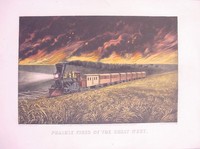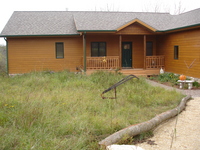How to save America
With John 7,000 miles away in a third world country, I have decided to fill in for him. Now, taking his wife out for a night on the town could be a little awkward and very inconvenient for me. Instead, I have decided to guest blog on this widely revered Ascent Stage.
My name is Cory Ritterbusch, and I am the only ecologist that John knows. Some of you AS die-hards may remember my blog PrairieWorks being cited in the past. I practice a small but growing form of land conservation known as Restoration Ecology in the rural Midwest. Ecological Restoration, as a verb, is the practice of repairing a damaged or destroyed ecosystem. Let’s try to get our arms around the man-child that is ecological restoration to show you: How you can utilize it in some of your decision making, how to view the landscape in a new way, the power that humans possess and the damage we can reverse.

For millions of years American Indians and the ecosystem co-existed together here in America rather nicely. What is now corn and soybean fields were extensive prairies, savannas and woodlands harboring thousands of different species. Intermingled amongst these prairies were forests, wetlands, bogs, fens, and so on. There was a very smooth and seamless transition into one another without fragmentation. These ecosystems were on fire frequently, started by lighting strikes and by intentional means by Indians. It was a part of the natural process here in America for millions of years. With fire, the Midwest remained open without many trees. The plants living here adapted to these fires and became dependent on them for survival.
Beginning in the early 1800s pioneers began entering these wild areas and by 1850 the landscape had become extremely altered. Prairies were plowed into crop fields, woodlands were cut for timber and wetlands were drained. This had a detrimental effect on the species that had existed here for millions of years. With the suppression of fire and the introduction of plants from other continents, the conservative native plants had a hard time competing and were eventually extirpated. Luckily, small areas known as remnants were spared and botanists could study these areas to learn about them. These are now a benchmark for comparison and a seed bank for plant propagation. Today, restoration ecologists are mimicking the natural processes in hopes of recreating the glory of the prairie’s former past.
The landscape, agricultural and energy industries have also taken notice and are learning from these ghost plants of the past. We are now utilizing native plants to amend troublesome site conditions and are designing landscapes that provide a greater sense of place. The deep root systems that native plants formed after millions of years of harsh weather conditions are being utilized for many applications including: Controlling erosion, removing toxins from soils, creating landscapes that do not require water and fertilizers, planting flower filled areas in sub-par soil conditions and for producing ethanol. Native plants also offer a greater sense of place rather than utilizing the same set of plants from state to state and region to region, regardless of climate and soil types. For example, an Applebee’s restaurant chain will use the same building design and landscape design for all of its locations in today’s current streamlined thought process.

Much like Frank Lloyd Wright’s house designs incorporated elements of local materials, we are now doing this outdoors. Ironically, for the first time we are beginning to create landscapes that are of American influence rather than English and Japanese, the norm for the last two centuries. Replacing lawns, which have large maintenance requirements, with short grasses native to the western Midwest is just one example of how we can utilize native flora to reduce financial and natural resource strains for the betterment of humanity. Soon, we hope that the 55 billion dollar landscape industry can be trained in local plants rather than the sharpening of blades at the cost of a depleting water supply.
History comes full circle sometimes. The plants that we destroyed to create food to feed a nation can now be utilized to solve many important issues here at home. Utilizing perennial prairie plants for ethanol, installing plants that reduce labor inputs, attracting wildlife, reminding us where we are, cleaning our air and water, all while stabilizing soil in the process can be useful tools as we look towards the future. The plants that were once used to sustain an entire population of native people may do so again.
Thanks to John for allowing me to preach the power of native plants.
Cory Ritterbusch













